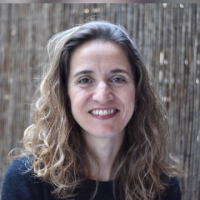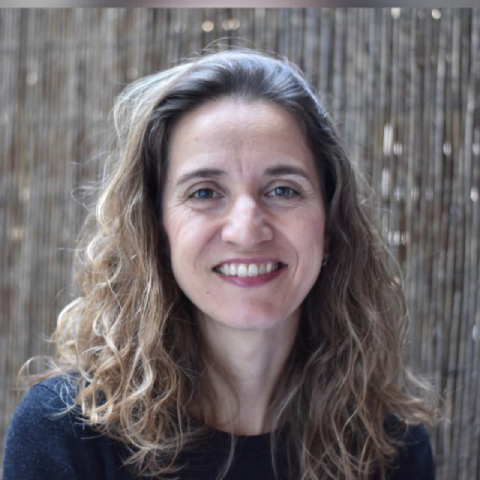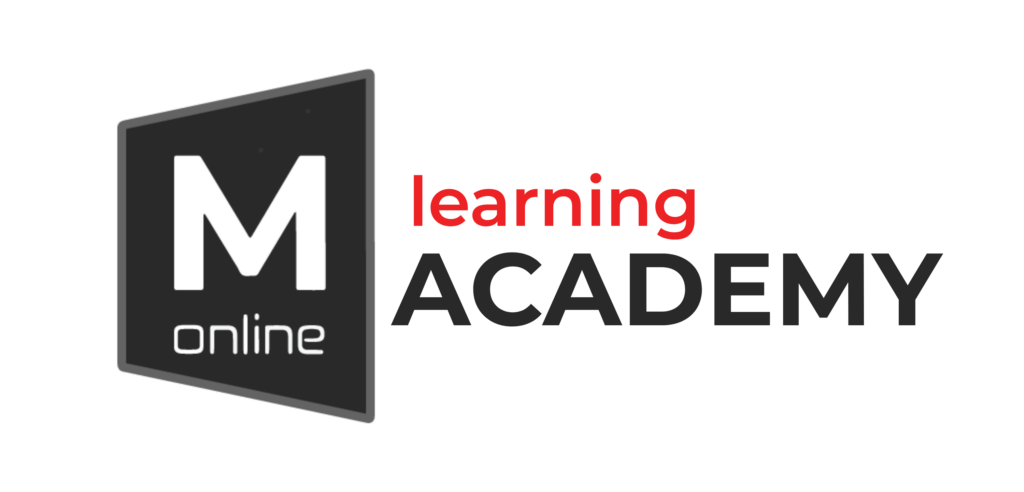Cranial deformities in babies: an osteopathic and multidisciplinary approach
- In Progress
- In Progress

Introduction
Cranial deformities have been shown to be more than just an aesthetic concern. In fact, the prevalence of these deformities has increased significantly since the “Back to Sleep” campaign, which advises placing babies on their backs to prevent sudden infant death syndrome. Cranial deformities are now a major reason for consultation in Paediatric Neurosurgery in the Western world. A recent study conducted by Ballardini et al. found that plagiocephaly was prevalent in 37.8% of healthy babies, while brachycephaly was observed in 12% of infants aged 8-12 weeks.
As healthcare practitioners, Osteopaths should be aware of the predisposing factors for cranial deformities and be able to recognise them when assessing patients between 0-4 months of age. Early treatment and prevention of cranial deformities are crucial to avoid severe complications and presentations. Achieving good treatment outcomes largely depends on early diagnosis, and this course aims to enhance our examination skills to be efficient in identifying and addressing cranial deformities.
One key factor in the development of cranial deformities is the presence of postural asymmetry and asymmetry in spontaneous movements in babies. Therefore, it is essential to diagnose postural asymmetry during the initial assessment of a baby and make appropriate clinical decisions regarding treatment.
In this course, you will learn how to improve the postural asymmetry and/or movement asymmetry through osteopathic manual treatment. Additionally, you will gain competence in providing parents with advice on how to position and handle their babies to prevent the development and worsening of deformities.
We will also discuss the importance of a multidisciplinary approach for effective clinical management of these cases. Recognising red flags that indicate limitations for osteopathic treatment and the need for referral to other professionals will be emphasised. Effective communication and cooperation with other healthcare professionals involved in the care of these patients are also essential skills to acquire.
The latest clinical guidelines recommend conservative treatment in the first 4-5 months of age, making manual therapy and repositioning advice particularly valuable. This course provides a unique opportunity to be at the forefront of treatment during the optimal timeframe, ensuring the best possible outcomes.
Course Content
- Infant Cranium: Ossification, Growth, Bone Tensegrity, Postnatal Osteology
- Observation and Palpation of Different Tissue Qualities
- Cranial Deformities: Definition, Aetiology, Prevalence, Long-Term Consequences
- Cranial Examination: Measurements, Classification Based on Severity
- Medical Perspective on the Problem: Role of Neurosurgeons, Medical and Surgical Approaches to Cranial Deformities. Identifying Red Flags and Referral Guidelines
- Evidence-Based Medical Treatment: Insights from Research Studies
- Palpation and Diagnosis Techniques for Cranial Deformities: Cranial Base Assessment and Forces Affecting the Dome
- Practical Applications
- Role of Physiotherapy in Cranial Deformities: Significance of Early Psychomotor Stimulatio
- Postural Asymmetry: Aetiology, Consequences, Literature Review
- Examination and Therapeutic Approaches for Postural Asymmetries. Multidisciplinary Approach.
- Practical Session: Examination and Treatment of Postural Asymmetry
- Common Findings in Cranial Deformities Examination: Plagiocephaly, Brachycephaly, and Dolichocephaly
- Review of Osteopathic Research on Cranial Deformities Treatment
- Practical Session: Different Osteopathic Techniques for Cranial Asymmetries
- Clinical Guidelines: Decision-Making in Cranial Deformities
- Review of Clinical Cases and Scenarios
- Case History Taking and Examination in Cranial Deformities and Postural Asymmetries
- Observation of Real Clinical Cases
Learning objectives
At the end of this course, participants will:
- Gain understanding of the various normal shapes of the infant cranium.
- Enhance knowledge about the natural growth of the cranium and the factors that influence its shape.
- Develop the ability to identify abnormal cranial shapes.
- Familiarise oneself with different cranial deformities, including their prevalence, medical treatments, and long-term consequences.
- Recognise red flags that indicate pathological cranial shape in infants and understand appropriate actions to take.
- Conduct a thorough examination of infants with cranial deformations and effectively classify their severity.
- Select the most appropriate approach for treating infants with cranial deformities in a safe manner.
- Recognise the importance of a multidisciplinary approach in managing these conditions.
- Identify the presence of postural asymmetry in infants and initiate early intervention to prevent the development of cranial deformities.
- Provide parents with appropriate guidance on how to handle their babies to prevent and improve cranial deformities.
Research supporting the course
Kordestani et al. Neurodevelopmental delays in 398 children with deformational plagiocephaly. Plast Reconstruct Surg 2005; 117: 217-218.
Bialocerkowski et al. Prevalence, risk factors and natural history of positional plagiocephaly. A systematic review. Developmental Medicina and Child Neurology 2008, 50: 577-586.
De Bock et al. Deformational plagiocephaly in normal infants: a systematic review of causes and hypotheses. Arch Dis Child 2017; 102: 535-542.
Ballardini et al. Prevalence and characteristics of positional plagiocephaly in healthy full-term infants at 8-12 weeks of life. European Journal of Pediatrics 2018, 177:1547-1554.
Aarnivala et al. Cranial shape, size and cervical motion in normal newborns. Early Human Development 90 (2014) 425-430
Mawji et al. The incidence of Positional Plagiocephaly: a cohort study. Pediatrics 2013, 132: 298-304.
McGarry et al. Head shape measurement standards and cranial orthoses in the treatment of infants with deformational plagiocephaly. Developmental Medicina and Child Neurology 2008; 50: 568-76
Mortenson et al. Quantifying positional plagiocephaly: reliability and validity of antropometric measurements. J Craniofac Surg 2006; 19: 413-19.
Adrichem et al. Validation of a simple method of measuring cranial deformities. Journal of Craniofacial Surgery 2008; 19(1):15-28.
Van Wijk et al. Helmet therapy in infants with positional skull deformation: randomised controlled trial. BMJ 2014: 348.
Lin et al. Clinical Standards of Care for Deformational Plagiocephaly. Cleft Palate-Craniofacial Journal, March 2016, 53 (2).
Wilbrand et al. Clinical Classification of Infant Nonsynostotic Cranial Deformity. J Pediatr 2012; 161: 1120-5.
Argenta. Clinical Classification of Positional Plagiocephaly. The Journal of Craniofacial Surgery May 2004 Volume 15, number 3.
Siatowski RM et al. Visual field deffects in deformational posterior plagiocephaly.
Journal of American Association for Pediatric Ophthalmology and Strabismus 2005;9:274-8
St. John D et al. Antropometric analysis of mandibular asymmetry in infants with deformational posterior plagiocephaly. Journal of Maxillofacial surgery 2002;60:873-7.
Miller et al. Long term developmental outcomes in patients with deformational plagiocephaly. Pediatrics 2000; 105 (2): 1-5.
Shamji et al. Cosmetic and Cognitive Outcomes of Positional Plagiocephaly Treatment. Clin Invest Med 2012; 35(5); 266-270.
Cabrera-Martos et al. Repercussions of plagiocephaly on posture, muscle flexibility and balance in children aged 3-5. Journal of Paediatrics and Child Health. 52 (2016) 541-546.
Collet et al. Development at age 36 months in children with deformational plagiocephaly. Pediatrics 2013; 109-15.
Alexandra et al. Plagiocephaly and developmental delay: a systematic review. J Dev Rehab Pediatr 2017; 38: 67-78.
Goh et al. Orthotic therapy in the treatment of plagiocephaly. Neurosurg Focus 2013: 35 (4).
Tamber et al. Review and evidence-based guideline on the role of cranial molding othosis therapy for patients with positional plagiocephaly. Neurosurgery 2016: 79 (5).
Philippi et al. Patterns of postural asymmetry in infants: a standardized video-based analysis. Eur J Pediatr. 2006 Mar;165(3):158-64. Epub 2005 Nov 10.
Philippi et al. Idiopathic infantile asymmetry, proposal of a measurement scale. Early Hum Dev. 2004 Nov;80(2):79-90.
Philippi et al. Infantile Postural asymmetry and osteopathic treatment: a randomized therapeutic trial. Developmental Medicine and Child Neurology. Jan 2006;48,1.
Sergueef N et al. Palpatory Diagnosis of plagiocephaly. Complementary Therapies in Clinical Practice (2006) 12, 101-110
Lessard S et al. Exploring the impact of osteopathic treatment on cranial asymmetries associated with non synostotic plagiocephaly in infants. Complementary Therapies in Clinical Practice 17 (2011) 193-198
Amiel-Tison et al. Cranial Osteopathy as a complementary treatment for positional plagiocefaly. Arch Pediatr 2008 Jun;15 Suppl 1:S24-30.
Cabrera-Martos et al. Effects of Manual Therapy on treatment duration and motor development in infants with severe plagiocephaly: a randomized pilot study. Child Nerv Syst (2016) 32: 2211-2217.
Hutchison et al. Deformation plagiocephaly: a follow up of head shape, parental concern and neurodevelopment at ages 3 and 4. Arch Dis Child 2011. 96(1), p85-90
Castaldo & Cerritelli. Craniofacial growth: evolving paradigms. The Journal of Craniomandibular & Sleep Practice. volume 33, 2015: Issue 1
Scarr. A model of the cranial vault as a tensegrity structure, and its significance to normal and abnormal cranial development. 2008 International Journal of Osteopathic Medicine 11(3):80-89
Collet et al. Cognitive outcomes and Positional Plagiocephaly. Pediatrics February 2019, 143 (2) e20182373
Ekéus et al. Neonatal complications amoung 596 infants delivered by vacuum extraction (in relation to characteristics of the extraction), The Journal of Maternal-Fetal & Neonatal Medicine 2017, DOI: 10.1080/14767058.2017.1344631
Sargent et al. Congenital Muscular Torticollis: Bridging the Gap Between Researchand Clinical Practice. PEDIATRICS Volume 144, number 2, August 2019:e20190582
Ellwood J, Draper-Rodi J, Carnes D. The effectiveness and safety of conservative interventions for positional plagiocephaly and congenital muscular torticollis: a synthesis of systematic reviews and guidance. Chiropr Man Therap. 2020 Jun 11;28(1):31
Klimo, P., Lingo, P. R., Baird, L. C., Bauer, D. F., Beier, A., Durham, S., … Flannery, A. (2016). Congress of Neurological Surgeons Systematic Review and Evidence-Based
Guideline on the Management of Patients With Positional Plagiocephaly: the role of repositioning. Neurosurgery, 79(5), E627–E629.
Baird, L. C., Klimo, P., Flannery, A. M., Bauer, D. F., Beier, A., Durham, S., … Mazzola, C. (2016). Congress of Neurological Surgeons Systematic Review and Evidence-Based Guideline for the Management of Patients With Positional Plagiocephaly: The role of Physical Therapy. Neurosurgery, 79(5), E630–E631.
Ellwood, J., Ford, M., & Nicholson, A. (2017). The association between infantile postural asymmetry and unsettled behaviour in babies. European Journal of Pediatrics, 176(12), 1645–1652
Zweedijk. The Role of Brainstem Sensitization in the Pathophysiology of Deformational Plagiocephaly. Acta Scientific Paediatrics. Vol4, issue 2 Feb 2021
Kim HY, Chung YK, Kim YO. Effectiveness of Helmet Cranial Remodeling in Older Infants with Positional Plagiocephaly. Arch Craniofac Surg. 2014 Aug;15(2):47-52
Kluba S, Kraut W, Reinert S, Krimmel M. What is the optimal time to start helmet therapy in positional plagiocephaly? Plast Reconstr Surg. 2011 Aug;128(2):492-498
Holowka, Mark A. MSPO, CPO*; Reisner, Andrew MD*,†; Giavedoni, Brian MBA*; Lombardo, Janet R. MBA, CPO*; Coulter, Colleen DPT, PhD*,‡ Plagiocephaly Severity Scale to Aid in Clinical Treatment Recommendations, Journal of Craniofacial Surgery: May 2017 – Volume 28 – Issue 3 – p 717-722
Graham T, Millay K, Wang J, Adams-Huet B, O’Briant E, Oldham M, Smith S. Significant Factors in Cranial Remolding Orthotic Treatment of Asymmetrical Brachycephaly. J Clin Med. 2020 Apr 5;9(4):1027
Débora Mínguez is a clinician and teacher based in Barcelona. She initially trained in England but soon established herself in Spain, where she began teaching Functional Technique, Osteopathic Medicine, and Clinical Studies. Her primary interest has always been in the treatment of children, and soon this age group became the majority of her clinic patients.
She has always believed in a multidisciplinary approach to patient care, which led her to become a part of the teaching staff and academic coordinator of a University Diploma in Paediatric Osteopathy. Over the years, she has deepened her knowledge in the Cranial Approach of Osteopathy and has become a teacher and tutor at the Sutherland Cranial College.
Débora Mínguez

Osteopaths
Certificate of continuous professional development (CPD) issued by Medi-Cine Online Learning Academy
English, Spanish
30
20 h
2,5 days - 1 Module


